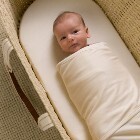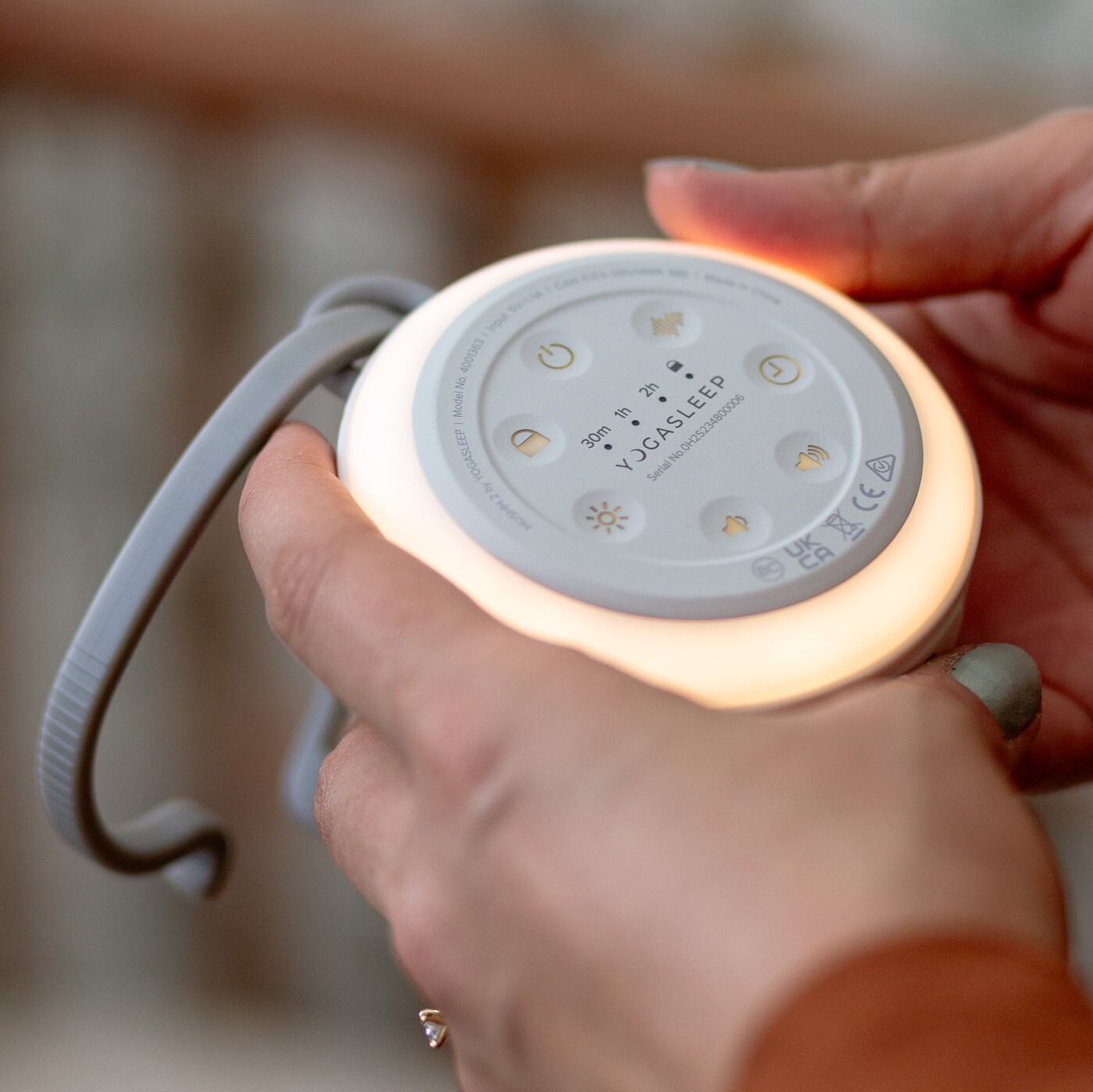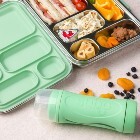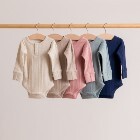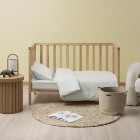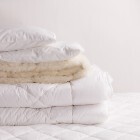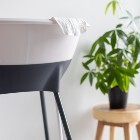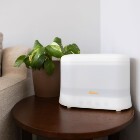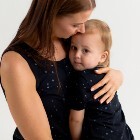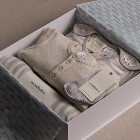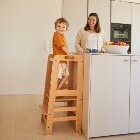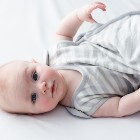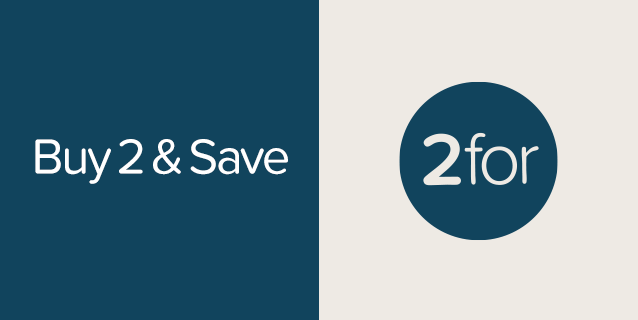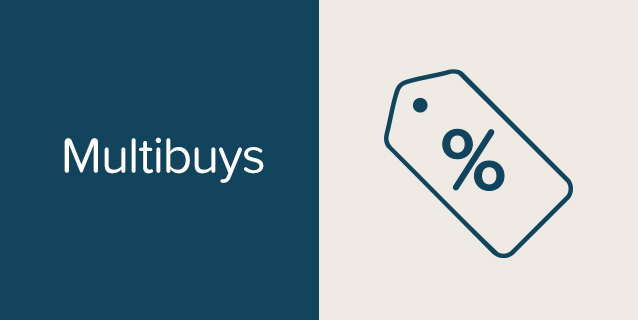Frequently Asked Questions
Do you have a question about a product? Here are some of our most frequently asked questions!
Customer Service FAQs
-
“When will I receive my order?”
NZ orders generally take 1-3 working days to arrive. Click here for shipping information.
-
“What if I don’t like what I ordered?”
We have a very generous returns policy and will refund or exchange any purchases provided the item is returned promptly in perfect condition. Read about Returns & Exchanges.
-
“Can I come and choose from your physical store?”
We are a small online retailer and our store is our website! We dispatch all orders by courier, with 5 pick ups every week day. We pride ourselves on providing the best possible service to all our customers who order online.
We now offer Click and Collect where customers who wish to pick up from our warehouse (based in Henderson, Auckland) can select Click and Collect as a shipping option, and then come and pick up. Please allow an hour for us to get a Click and Collect order ready.
We made a considered decision a couple of years ago that we don't allow customers to choose and select from our warehouse. We have a small but dedicated customer services team, and their priority is to get the orders packed and out the door the same day whenever possible. If we allowed customers to visit and choose 'in store', we wouldn't get as many orders picked and packed in a day - and that is not fair for our online customers!
-
"Can you help me with some sleep advice?”
Certainly! We have a comprehensive library of sleep articles on all aspects on infant and child sleep.
Read Articles here.Plus you are welcome to join us on Facebook for lots of chat and support. We have a very active discussion page with lots of sleep topics being discussed and mums supporting each other during sleep training. Visit our Facebook Support Groups.
-
“Can you do me a special deal if I buy a bunch of stuff?”
We have a great range of specials and you can always get a discount using our Rewards Program. If you are interested in buying in bulk, please contact our office to discuss.
-
“What do other customers say about your service?”
Check out our testimonials here. We receive several great emails every day so this is just a small selection!
-
“What do you charge for shipping?”
Our NZ shipping starts from $7 for small items and increases based on the total size of your order and your location. Click here for Shipping Info.
-
“Do you do discounts?”
We run regular specials, sign up for our newsletter and Like us on Facebook to hear about our sales first.
-
We have lots of ways for you to save. Our loyalty points program gives you 5% back on your order (excluding outlet category), which you can either use as a discount on your next order or save the points up.
Read about our Rewards Program. -
Sign up to our newsletter for the first time and receive a $10 Coupon to spend on any non-discounted items $49 or over. Plus When you sign up to our SleepPoints rewards program you'll also receive 100 SleepPoints added to your account. Sign up here.
“Do you ship overseas?”
We ship daily to Australia, with delivery generally 3-5 working days. Australian orders need to be placed through our website www.thesleepstore.com.au. If you wish to send a gift to friends or family in New Zealand, please order through www.thesleepstore.co.nz and we will deliver the gift in New Zealand.
-
“Do you do special orders”
We can sometimes order in items from our suppliers that we don't usually stock. If there is something special you are after, email us after reading our info on this. Read about Special Orders
You are also welcome to phone or email us for personal assistance. Our contact number is 09-816-8706 or Email Here.
Sleeping Bag FAQs
-
“Why use a Baby Sleeping Bag or Sleep Sack?”
-
Comfort baby and keep her warm, without the need for additional bedding.
-
Baby will be the right temperature all night - there are no sheets or blankets to kick off while in a baby sleeping bag, so your baby won't wake up cold.
-
Reduce wake up's from baby being cold - With a a consistent, warm temperature all night, your baby is less likely to wake from the cold (they may still wake if there are issues with sleep associations or self settling).
-
Ensure baby sleeps safely - there are no sheets or blankets to wriggle under or pose a suffocation threat so you can help create a safer sleep environment for baby.
-
Prevent wake up's from baby getting her feet stuck between the cot bars - baby sleeping bags prevent little feet from becoming stuck between them.
-
A sleeping bag is a positive sleep association so the transition from bassinet to a cot, and later from a cot to a bed, is less daunting because the sleeping conditions remain the same.
-
Complete the bedtime routine in baby's sleeping bag - you can cuddle your baby and then place them in their cot, which makes settling much easier.
-
Create a positive sleep association - your baby will quickly develop a sleep association with their sleeping bag, meaning that everytime they are put in their bag, it's a strong cue that it's time to sleep.
-
A sleeping bag is a sleep environment that is safe and familiar, so when taking your baby sleeping bag on holiday or when visiting family and friends, your baby sleeps has their usual sleep cue.
-
Travel sleeping bags, which have a slot of the pushchair buckle, helps baby with a regular sleeping routine, even when you are are out as it also allows your child to go into a pushchair or a buggy and then simply transfer your baby to their cot or bed.
-
-
“How many sleeping bags do I need for my baby?”
We recommend you invest in 2 sleeping bags for your baby or toddler. This is particularly important in winter, when washing takes longer to dry and also you really need your sleeping bag to keep your baby warm.
-
“What size should I buy?”
The sizes are based on average sized babies, so do consider if your baby is extra big or small for her age. We recommend that you buy the right size for your baby now, rather than worrying about it lasting for next season. It's important that your bag fits well, so there is no danger of baby slipping into a bag that is miles too big. You can also consult the manufacturer's measurements before purchasing to ensure the bag will be just the right fit.
If you're not sure about the size, carefully open your purchased bag, keep the packaging and try it on. We are happy to exchange the size provided the bag is returned to us in original, saleable condition, with all packaging intact.
-
“What is the difference between a Sleeping Bag & Sleep Sack?”
Nothing! They both refer to a warm, snuggly bag to keep your baby safe and warm for sleeps. We tend to use the term 'baby sleeping bag', as this is what our sleeping bags are labelled as. The term 'sleep sack' is sometimes used by European bag manufacturers or some cheaper brands.
-
Choosing the Right Sleeping Bag
-
“What is a TOG Rating?”
The tog rating indicates how warm the bag is and relates to how many blankets the bag is equivalent to. The higher the tog, the warmer the bag. For example, a 2.0 tog bag is equivalent to just over 2 blankets. Merino bags are not tog rated because they have naturally temperature-regulating properties.
- More about TOG Ratings
Swaddling & Wrap FAQs
-
“When should I stop wrapping my baby?”
Swaddling works particularly well for about the first 3 months, as it reduces your baby startling herself awake. So any time after your baby's startle reflex stops is a good time to start weaning off wrapping. You should also wean from swaddling when your baby shows signs of rolling (see more below). We find it works best to wean baby off wrapping gradually, by first introducing wrapping with one arm out. Then you can start to introduce a sleeping bag, which is the ideal replacement to swaddling.
The ErgoCocoon, Miracle Blanket, Purflo Swaddle to Sleep & Embe Transitional Swaddle's are very useful for weaning off swaddling, as you can use them with both arms in, one arm in or both arms out.
The other key consideration is whether your baby is rolling. Swaddling is very safe when baby is sleeping on their back, but has an increased SIDS risk if baby is swaddled and sleeping on their tummy. So if your baby is showing signs of rolling onto their tummy, you either need to use a Safe T Sleep Sleepwrap to keep baby securely on their back or stop wrapping. Using a wedge is not a secure option.
-
“Is it safe to swaddle with baby’s arms by her sides?”
We believe arms down swaddling is the best option, as it stays much more secure than arms on chest swaddling. One of the risks with swaddling occurs when the wrapping comes undone and gets up by baby's face, and this is far less likely when you wrap securely with arms by sides.
We also asked Dr Harvey Karp, paediatrician, academic and author of 'The Happiest Baby' why he believes arm down swaddling is the best option:
" I am unaware of any study that has shown that swaddling with the arms of a full term baby at the side leads to any ill effect at all...the only recommendation for arms up swaddling is for premies...this helps them be more alert and neurologically organized. However, this is not a concern for term babies who are being swaddled to improve sleep and soothe crying.
That is why this approach has received the overwhelming support of all groups in the US...from the doulas (DONA) to the Surgeon General, from the founder of Lamaze to La Leche League, from Prevent Child Abuse America to Attachment Parenting International.Most of the Native Americans swaddled the arms down until ~6 months and they were well known to be brave and independent. The evidence of swaddling with arms down shows overwhelmingly that babies have more relaxed heart rates and respirations and that they sleep better (longer...yet they are more arouseable so they are less at risk for cot death-SIDS).
This approach (with arms down) is showing great promise for improving breast feeding success rates and lowering the incidence of depression, marital stress, shaken baby syndrome, and even SIDS."
Swaddling in itself is extremely unlikely to cause your baby to overheat. For example, if your baby had no clothes on and a muslin wrap, she is not going to overheat just because she is wrapped.
Remember to consider all the layers on your baby - her clothing, her baby wrap and the blankets over the top. It is the total combination of layers, rather than one swaddling layer, that will determine if your baby is too hot or too cold, or just right.
When checking how warm your baby is, slide your hand down onto her chest or feel her neck. It should be warm but not hot and sweaty. Don't worry if baby's hands are a little chilly, as this should not effect her overall temperature. We recommend using 100% cotton wraps, as these breathe better than a synthetic fabric.
It is also essential for baby safety that their head is uncovered for sleeping at all times.
-
Swaddling & Wrap Information
-
“My baby cries and struggles when I wrap him. He hates being wrapped!”
Remember your baby is just days or weeks old, and doesn't really know what he likes or dislikes. You know best, and swaddling will generally help your baby settle quickly and sleep longer, both of which are good for your baby and you.
Many babies are not swaddled until they are over-tired, and are already screaming or crying as they should have been in bed earlier. If you need more information on recognising newborn baby tired signs click here.
Babies are used to being squashed in your womb, and were happy like that for 9 months.
Babies also like to be swaddled right! They like firm and secure, not loose so they can squirm about and become unwrapped. I would certainly not give up swaddling because your baby is crying as you wrap him. He may need more calming techniques in addition to swaddling, and also avoiding him getting tired will make a significant difference.
Bedding & Mattress FAQs
-
“What size bassinet should I buy?”
Bassinets are available in a range of sizes. The most common is the 76 x 40cm size, which is used by a number of brands.
Please check your mattress size before ordering to ensure it will fit the linen you order.We have a range of bassinet and co-sleeper bedding sizes at The Sleep Store, including 40cm x 80cm and 76cm x 40cm. We also stock specialist sizes for co-sleepers & larger bassinets. We have a range of bassinet mattresses in stock and can also order in custom sized foam bassinet matttresses, please allow 3 weeks for manufacture and delivery.
-
“What is the standard size for a cot?”
American cot sizes are now the most common size in New Zealand for cots. The measurement is usually 130 x 69cm, with a little variation such as 68 x 129 etc.
We have a range of cot bedding at The Sleep Store.We do stock some items for large or Boori cots (130cm x 76cm), which will also fit an American Cot (the fiited sheets will be a little big and the excess can easily be tucked in). Both innersprung and foam mattress can easily be ordered in this American Cot Size.
We also stock a range of specialist fitted sheets for small cots & oval bassinets.
-
Bedding & Mattress Protection Infomation
-
“What are Brolly Sheets?”
Brolly Sheets take the hassle out of bedwetting with a quick to change protector that is simply placed on top of the bottom sheet and tucked in under the mattress. Your child sleeps on the 100% cotton, comfy top whilst the middle layer and waterproof backing keeps the bottom sheet & mattress dry. When wet, it only takes seconds to replace with another. This means no more completely stripping the bed!!!
-
“Do Brolly Sheets work?”
Because Brolly Sheets lie on top of your normal bottom sheet, after an accident you just need to whip off the Brolly Sheet and replace with another. This means you do not need to strip the entire bed and start again and you can gain that extra beauty sleep!
Clothing & Fabric FAQs
-
“Why Merino?”
Merino is a hydroscopic fibre. This means it's capable of absorbing moisture vapour from the environment while at the same time repelling liquids. That's unique to Merino.
In technical terms Merino can absorb up to 30% of its weight in moisture before it starts to feel damp. Its regain factor (the amount of water in the fibre expressed as a percentage of its dry weight) is 17 percent under standard conditions, compared to between 1-4 % for synthetic fibres.
The natural ability to absorb and desorb water vapour contributes to Merino's excellent comfort performance as an apparel fibre and makes it very useful for children who may become wet in the night or swaety if they get too hot. -
“My merino garment is pilling and bobbling!”
Pilling is a natural process that is inherent in merino fabric due to the fact that merino is a staple fibre. Generally if pilling occurs, it’s because the shorter fibres are working their way to the surface of the fabric.
The best way to avoid pilling is to wash a new garment within 3 wears. To alleviate the pilling, we suggest that you wash the garment with a coarser fabric such as denim jeans (ensure all zippers are closed). The fabric will improve over time as the shorter fibers are removed.
Thanks to Icebreaker for this information.Our thanks to Mokopuna merino for this excellent information about caring for your gorgeous Mokopuna merino garments! Remember to check your care label on your garment if you have another brand and always use a wool approved detergent not regular washing powder that you might use on other fabrics.
- Turn garment inside out to wash and dry
- Wash dark colours separately
- Allow 5% shrinkage
- Machine wash 30°C max, gentle wool cycle, or hand wash
- Use wool approved liquid detergent
- Gentle machine spin dry
- Do not use bleach, nappy cleansing agents, garment brighteners or fabric softeners
- Do not soak or spot clean
- Dry flat away from direct sunlight
- May be tumble dried - low heat
- May be dry cleaned
Some cream merino garments are particularly susceptible to yellowing if exposed to sunlight. Please follow our washing instructions carefully. The Sleep Store do not take any responsibility for damaged garments due to incorrect washing detergents or procedures.
Cloth Nappy FAQs
- "Why choose re-usable nappies?"
Re-usable nappies are a great option for both your pocket and the environment. A disposable nappy can take up to 500 years to breakdown in landfill, so multiply that by several nappies a day and you can see how this builds up. Even using just one reusable nappy a day will save a lot from landfill. and although it's a bigger initial outlay, overtime, reuable nappies will save you money too, now that's a win!
"Why choose Sassy by Nestling?"
Sassy by Nestling are an affordable and convenient reusable nappy solution. With a range of inserts, including Bamboo and Hemp, they can be tailored to suit your baby's age and needs. They are easy to take care of, with a simply dry pailing, pre-wash and wash routine and come in a range of fun, kiwi designs. One size fits most, Sassy Pants can be used from approximately 3.5 - 17kg's.
Sassy Pants have both velcro and snap nappy options and you can choose to use inserts in the pocket or on top of the pocket. It's easy to adjust sizing for you little one, ensuring the fit is snug around the legs and has a little space around
-
“Will the reusable nappies leak?”
Sassy by Nestling nappy systems have been designed for maximum absorbency with minimum bulk. Both cotton and microfibre are highly absorbent fabrics ideal for nappies. If your nappy is leaking, check out fit guide to ensure it's properly fitted to prevent leaks.
-
“How often will I need to change Sassy by Nestling nappies?”
A reusable nappy will need to be changed every 2-4 hours but it really depends on how often your baby wets. Reusable nappy users prefer to change their baby more frequently whereas there is a temptation for disposable nappy users to leave for longer periods between changes because their baby does not feel wet.
Training Pants Information
Absorbent pull-up style potty training pants are the perfect step up from nappies towards big-kid undies. They promotes independence for your toddler with pull-up style design and give your child a little more time to make it to the toilet.
Snazzipants day time training pants are not meant to keep your child completely dry like nappies; instead, they give you a bit of time to get to the bathroom when accidents do happen while letting your toddler feel the damp.
Wee Pants are ideal when it's time to ditch nappies. Let your little choose their favourite design for their 'big pants'.
These pants are designed to feel wet against the skin, unlike nappies, to help your child transition to using the toilet.
Sleep Trainer Clock FAQs
-
“How does a sleep trainer clock help?”
Children don't know that time it is...they can’t tell the time from a regular clock and their body clock could be telling them it's morning at 5am!
A sleep trainer clock uses a simple visual change to show when it is ‘morning’ and therefore when your child is allowed out of bed.
Before this change happens, the clock shows it is still night time and therefore your child should be in bed asleep (or at least quiet and not disturbing the rest of the family)
The clock is objective and can’t be argued with..it is either 'morning' or it is not.
Using a sleep trainer clock becomes an essential part of your bedtime routine – putting the clock ‘to sleep’ and saying you will see it wake up in the morning reinforces the message about staying in bed both at night time and in the morning. -
“How can the child tell it is morning?”
It depends on the clock. With the Gro Clock, the glowing screen shows images of cartoon stars and sun to communicate ’sleep’ and ’wake-up’ time and during the night, the stars go out one by one. Other trainer clocks have other visual clues such as eyes opening and closing.
-
“Which sleep trainer clock should I buy?”
As with most things electrical, there is a strong element of ‘you get what you pay for’ and budget is always a factor. A sleep trainer clock is something you want to get a lot of worry free use out of. Only the sleep trainer clocks that meet our quality standards feature in our collection.
When considering which clock to get think about which clock you like and your child likes the look of as well as if you'll use it away from home. Sleep trainer clocks with a battery back-up are good options for when there's a power outage or when you're away from home as you don't need to worry about remembering the plug.
Sleep Trainer Clocks Information
Humidifiers & Essential Oils
-
“What is a humidifier and what does it do?”
A humidifier is a device that adds moisture to the air. If you are using a heater, heat pump or air conditioner in your home then the air can become very dry. Dry air can irritate the nose, throat and skin. Dry air can lead to tickly coughs, nose bleeds and dry skin. An ultrasonic humidifier creates a cool mist from water by using high-frequency sound waves. Cool mist humidifiers don't contain any heating elements, which means that there's no risk of burns and they're more energy efficient than vaporisers that use heat to disperse vapour. From the feedback we have received the cool mist from an ultrasonic humidifier tends to produce less condensation than a traditional vaporiser.
We've found an ultrasonic humidifier to be very useful if you have a cold, as the cool mist helps to open up the airways without the need for additional aromas. When dealing with coughing, and particularly those annoying tickly coughs, the cool mist helps to soothe the throat. If you or your little one has asthma then consult with your doctor for alternatives to a humidifier.
-
“What is a vaporiser?”
A vaporiser creates vapour by heating a liquid or oil-infused pad. They are typically used with an essential oil blend and create an aroma dispersed through a warm watery vapour. Traditional vaporisers are often associated with condensation as the warm vapour condenses when it hits a cool surface like a window.
In addition to essential oil vaporisers like the one we stock from the Dolphin Clinic, we also have dry vaporisers like the Vaporeze. They use aroma-infused pads that are heated to disperse their aroma, and may be suitable in situations where a humidifier or diffuser isn't. Other devices use high-frequency sound waves to produce the vapour from a water and essential oil mixture, like the Lively Living Aroma-Bloom and Crane Aroma Diffuser.
-
“What is a diffuser?”
You can mix essential oils with a small amount of liquid amd use in a diffuser to create an aroma. Diffusers have a smaller capacity tank and don't put out enough moisture to offer the same benefits as a humidifier. They use the ultrasonic mist as a way to disperse the aroma of an essential oil that is added to the tank with water and often have additional features such as a built-in night light or ioniser.
-
Vaporiser & Essential Oils Information
Sleep Programmes & Books
-
“My baby just cries all the time and I can’t get him to sleep!”
The Happiest Baby DVD - shows you an excellent swaddling technique, use of white noise and other highly effective techniques for settling and helping newborn babies sleep longer. The best information available to learn how to settle your baby.
-
“My baby only sleeps for 30 minutes at a time, how can I get her to sleep for longer?”
The Happiest Baby techniques - the swaddling technique, use of white noise and other techniques are very effective for helping babies sleep longer, both during the day and through the night. We also highly recommend buying a White Noise Machine to block out surrounding noise and mimic the noise from the womb.
-
“How can I learn to wrap my baby so he doesn’t escape?”
The DUDU technique is a great way to swaddle baby so they don't escape. Watch our swaddling instructions for the DUDU technique.
-
“I am currently feeding my baby to sleep but I would like I teach her to fall asleep by herself.”
If you are looking for some gentle structure to your day and also to help your baby learn to sleep independently, we highly recommend The No Cry Sleep Solution, which offers a breakthrough approach with gentle ways to help their baby sleep.
-
Sleep Programmes & Books Information
If you want the best of our expert newborn sleep advice all in one place, you need our digital Newborn Sleep guide. You'll get over 60 pages of specialist baby sleep information and detailed articles with quick links to our related video guides, posts and other free helpful content. Get your digital eBook copy download for an extensive range of tips and advice on Newborn babies sleep, from 0-3 months...no jargon or judgement, just practical solutions!
-
“I am currently co-sleeping with my baby and am happy feeding in the night... but I'm looking for gentle ideas to help her sleep longer”.
The Happiest Baby DVD - shows you effective swaddling, use of white noise and other highly effective techniques for settling and helping newborn babies sleep longer.
No Cry Sleep Solution - suitable for babies aged newborn to 2 years. Covers techniques for weaning off feeding to sleep, needing a dummy to fall asleep and rocking or needing a parent to fall asleep.
Baby Carrier FAQs
-
"What stretchy wrap do you recommend the most?"
Our most recommended stretchy wrap carrier, loved by all our babywearing consultants. is the Boba Wrap. It is intended for babies from birth to 16kg Yep, that's right! You can start wearing your little one right away. The Boba Wrap is the most ergonomic babywearing option for babies from birth. Simply tie the material snug against your body and achieve a perfect fit every time. The Boba Wrap is a high quality, 2-way stretch fabric, which means it stretches both around you and your baby and across the wrap, rather than just the 1-way across stretch that is common in basic cotton wraps. Wear your Boba Wrap round the house, out and about and perfect for discreet and comfortable breastfeeding when you are out too.
Boba wrap fits all size adults, so there's no need to adjust it or buy a different carrier. You'll find the Boba Wrap a really comfortable fit regardless of your size and height, it will fit all adults perfectly. You can tie your Boba Wrap and wear it all day, just pop baby in and out as you need, even wear it in the car and put baby in when you get to your destination.
-
"I want an easy to use buckle carrier for me and my husband - help?"
We reckon the Beco Gemini is New Zealand's most popular, best value all- position baby carrier. It's simple to use, super safe for your baby and very comfortable for parents of all sizes. The Gemini has everything you need in a baby carrier, including the popular forward facing position, without the high price of many premium brands. Fully adjustable with 4 different positions for newborns and with a 16kg weight limit it should last right up until around 18months.
The Boba Bliss is another great option. It's an incredibly easy to use hybrid carrier, so has the softness and stretchiness of a wrap, but the ease of a buckle-and-go system like a soft structured carrier.
-
“What are ring slings?”
Ring slings are made from lengths of woven wrap fabric with two rings sewn in one end. They are used on one shoulder and again will take you from new born through toddlerhood. Ring Slings are another great comfortable supportive option for newborn as they’ll support the “C-shape” curve babies are born with. They have a shorter learning curve than wraps, and many men will be happy to wear them too.
-
Ring slings are fabulous with toddlers as you can pop them in an out easily once they’re starting to want to walk on their own, but inevitably end up tired halfway along! They fold up easily to be carried in a nappy bag. Rings slings are far more versatile and useful than a 'pouch sling', as they can be used by different sized parents and quickly adjust to the size of the adult and child.
They are a great introduction to babywearing as they don't require any specific technique to use them - you just need to know the right position for the age of your child, and ensure you position the ring sling comfortably on your shoulder. Like woven wraps, ring slings are available in a wide range of fabrics and very beautiful designs. Choose something simple and practical like charcoal linen, or go lush with a limited edition silk blend design…
-
“What are woven wraps?”
Woven wraps are long pieces of specially woven babywearing fabric. They are designed to be strong and secure and have a good stretch/give across the diagonal to mould around your baby. They have a bit of a learning curve, so you need to be prepared to ‘learn’ how to wrap, and pop along to a babywearing meet/group to get some hands on pointers. YouTube has a lot of tutorials now as woven wraps become more popular, but there is nothing like hands on help!
The fantastic thing about woven wraps is that they will fit all sizes and shapes and all ages of babies, from newborn up. Our babywearing expert, Alice, is happily still wrapping her 12.5 kg toddler!
Because the fabric doesn’t stretch you can use them in lots of different styles, front, side and back. You can use them in one shoulder and two shoulder carries, some that wrap snugly around your chest to distribute weight and others that just are more like a backpack.
And one of the reasons people love woven wraps and become addicted to the, is that the designs are AMAZINGLY beautiful!
From 100% cotton, to linen, silk, wool and hemp blends, there is a wrap for everyone and every sized child. Different blends will give different support, with hemp being the most ‘toddler worthy’ wrap and wool blends being amazingly soft and cuddly. Most people of average size would be fine to start out in a 4.6/7m wrap (or a ‘size 6’) and there are many lengths available depending on what carries you like or what you feel like wearing on any given day.
-
“What's the best carrier for a newborn?”
Stretchy wraps like Moby, Hug-a-bub or Boba are lovely for newborns. They’re soft, gentle stretch cotton that you wrap around yourself (or your partner!) and tuck your new bundle into. Particularly in the first few months they can give you your hands back and are comfy enough that you can sit down and relax once baby has zz’d off all snuggled up. Because they wrap right around you if you spread them out they’re amazing for skin to skin too, as you'll be covered where you’d like to be and baby is held against your chest listening to your heartbeat.
Most people will find that day to day use of a stretchy wrap will wind up around the 8-9kg mark as due to the stretch in the fabric it becomes harder to hold baby close and snug to you. Keeping their weight close to your centre of gravity is what keeps a carrier being comfortable. You can wrap a Moby or Boba for a hip carry which is great as babies get nosier and want to see what’s going on in the world around them, but they are NOT appropriate for using with back carries.
-
Choosing the Right Baby Carrier
Furniture Product FAQ
-
The Sleep Store Drift Travel Cot
Our Drift Travel Cot has been designed with parents in mind. Quick to assemble and easy to pack down, the Drift takes away some of the stress of holidays with babies! It comes with legs attached, you just need to open and click the legs into place. The mattress has a firm base and lightly cushioned top, just pop it into the travel cot. There are 6 velcro tabs to secure the mattress in place to make it extra safe. The sides are mesh to the ground, which is a requirement of the safety standard to ensure it is fully breathable. The Drift meets the NZ/AU Safety Standard for travel cots.
-
“How can I have my baby near me when I sleep?”
The UniLove 3 in 1 Bassinet and Purflo PurAir Breathable Bassinets are safe options for baby and can easily be placed near your bed.
Snuzpod4 is one of our most popular bedside bassinets. It features 9 height settings adjustable up to 61cm (measured from the floor to the top of the parents mattress) and of course it's safety tested.
"Do you sell nests?"
We don't sell padded nests or pods at The Sleep Store as we have major safety concerns about them. If you're looking for something "nest-like", but safe for overnight sleep, the Purflo Sleep Tight Baby Bed is ideal. It's the first of it's kind and addresses the safety concerns of untested soft nests and pods. It is small enough and light enough to move around the house during the day, so baby can be nearby, wherever you are. It's also easy to transport and use as a bed when visiting friends or relatives.
The Sleep Tight Baby Bed has firm, breathable sides and a firm, flat sleeping surface, so you can rest-assured knowing baby has a safe sleep space.
-
Choosing Sleep Furniture for Your Baby
-
“Do you have any good old traditional cots?”
The Sleep Store Frank Cot is a stylish, affordable cot and great quality. Made from 100% NZ pine, it's sturdy, yet good looking, with it's sleek, simple design. The Frank Cot, has two height options, for younger and older baby's and easily converts to a sofa bed. It's a fixed side cot, which we believe is a safer option than a drop side cot, which can fail over time. in America, it has been illegal to sell or manufacture drop side cots since 2013 due to safety concerns.
-
The Sun Cot is a timeless and beautiful design by Troll. It features dual mattress base height positions: Low for toddlers and Higher for infants.The cot can convert to a junior bed once your little one is becoming more independent and ready for a 'big bed', (kit available separately). Troll design and make affordable nursery furniture while still prioritising the environment during production processes.
Leander also makes stylish cots. The Linea cot is a minimalist design, precise but also elegant and sophisticated. The craftsmanship and quality materials ensures longevity and daily pleasure. The Linea cot is made from solid beech and measures 120 x 60cm. It has beautiful old style finger joints – a testament to the craftsmanship involved. The base has two height settings for the baby and the cot converts to a junior bed by removing one of the sides for the older child. Secondly, the Leander Cot is simply stunning and is designed to follow your child from baby to junior! This means that you do not have to invest in beds and mattresses more than once during the first 7 years of your child's life. Features five settings to match the bed to your child's needs and age by using the wooden extension parts and the mattress footrest - all the parts you need are included in the 'junior kit'. An original Leander mattress (sold separately), ensures optimum comfort and ventilation, and thus a good night's sleep for your child. The bed is made from solid beech wood, from sustainable forests and can bear up to 100kg. The surface treatment is a water-based lacquer, to protect your child and the environment.
Safe T Sleep FAQs
-
-
What is a Safe T Sleep?"
-
The Safe T Sleep can help your baby settle more quickly and stay asleep for longer, as babies stay swaddled or in the position you put them to sleep in. We often recommend Safe T Sleep for babies who are sleeping well swaddled but are showing signs of rolling, so adding a Safe T Sleep means baby can continue to be safely swaddled. Parents can then gradually wean baby off swaddling with one arm, then both arms out, while baby still has the supportive swaddle feeling of their Safe T Sleep. New Mini size Sleepwrap from Safe T Sleep, fits pods, baskets, Moses baskets, hammocks, airline cradles, pram bassinets and small bassinets.
-
-
Safe T Sleep Product Information
Fire Labelling Info
-
Fire Hazard Labelling for Nightwear
The Sleep Store takes our responsibilities in this area very seriously, and as a result we have prepared this information to ensure you can keep your children safe from fire hazards and burns in nightwear.
All nightwear sold in New Zealand for children 6 months to 14 years must comply with the Standard AS/NZS 1249:2014 Children’s Nightwear and limited day-wear.
This Product Safety Standard aims to ensure that all clothing that is suitable for children to wear at night is either designed to reduce fire danger or is made of fabric that is less likely to burn.
All children’s nightwear must carry a fire hazard label. The label provides to caregivers information aimed at helping to reduce the risk of death and injury from fire hazards.
All product pages now show a garment's label, so you can make an informed decision when choosing nightwear and sleeping bags.
-
New Zealand & Australian Joint Standard
AU/NZ 1249 is a joint standard between Australia and New Zealand, however the counties are not currently aligned in terms of the version of the standard in force. New Zealand and Australia have fully implemented 1249:2014 and this is the mandatory standard.
Please note as a New Zealand company, we ensure that our products comply with the current safety standard in New Zealand - AU/NZ 1249:2014. This is has been in force in NZ and Australia since 2017.
-
Fire Labelling Infomation
-
Keeping Your Child Safe
Be aware that if a child is wearing high fire danger nightwear they should stay far away from the fire or heater. But even a ‘low danger’ label doesn’t mean there is no danger. A low fire danger label does not mean NO fire danger, as all fibres will burn. Even ‘low fire danger’ can still catch fire if the child is too close.
Making sure children stay at least one metre away from any heat source such as a heater or open fire could reduce their risk of injury or death from a fire hazard.
We recommend buying your children's sleepwear close fitting in the correct size. Much of the danger from nightwear comes from buying nightwear in the next size up, to try to get an extra wear from it next year...this is very false economy if the loose fit puts your child in danger!
Look for nightwear styles that are very snug fitting, ie tight arms and skinny fit leggings, rather than traditional button up tops and loose pants.
Merino fabric is the safest option for nightwear, as has the slowest burn time of any nightwear fabric.Sleeping bags are also covered by the product safety standard, and will have one of the above labels. We strongly recommend taking off your child's sleeping bag when you take them out of their cot. It is not safe to be walking round in a sleeping bag, as your child can easily trip and fall. This could result in injury from the fall or mean they fall onto a heater or other fire hazard.
If you have any further questions regarding the new fire labelling, please let us know.




